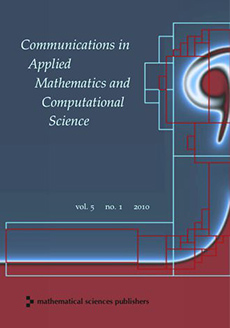Abstract
Extracorporeal shock wave therapy (ESWT) is a noninvasive treatment for a variety of musculoskeletal ailments. A shock wave is generated in water and then focused using an acoustic lens or reflector so the energy of the wave is concentrated in a small treatment region where mechanical stimulation in principle enhances healing. In this work we have computationally investigated shock wave propagation in ESWT by solving a Lagrangian form of the isentropic Euler equations in the fluid and linear elasticity in the bone using high-resolution finite volume methods. We solve a full three-dimensional system of equations and use adaptive mesh refinement to concentrate grid cells near the propagating shock. We can model complex bone geometries, the reflection and mode conversion at interfaces, and the propagation of the resulting shear stresses generated within the bone. We discuss the validity of our simplified model and present results validating this approach.
Citation
Kirsten Fagnan. Randall LeVeque. Thomas Matula. "Computational models of material interfaces for the study of extracorporeal shock wave therapy." Commun. Appl. Math. Comput. Sci. 8 (1) 159 - 194, 2013. https://doi.org/10.2140/camcos.2013.8.159
Information





